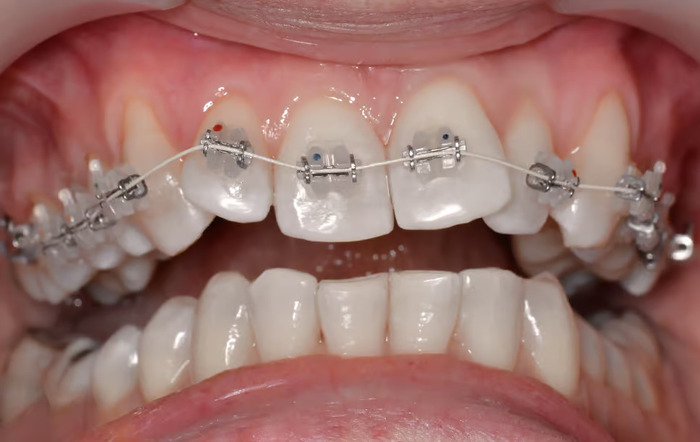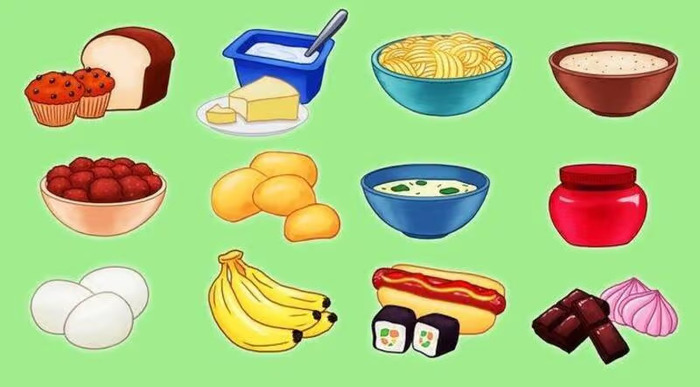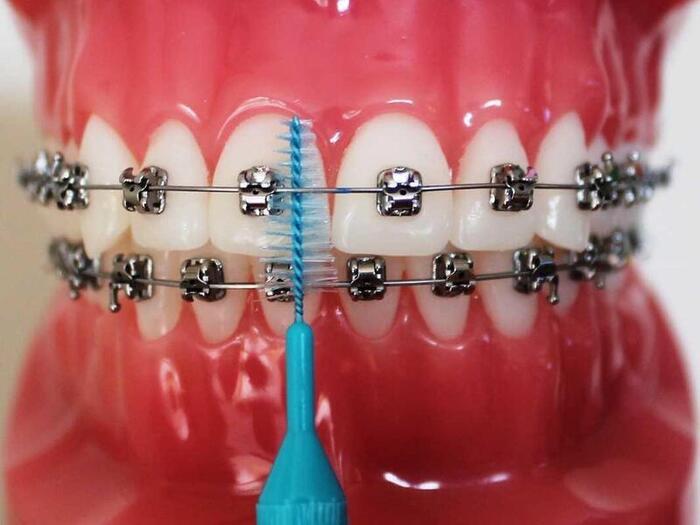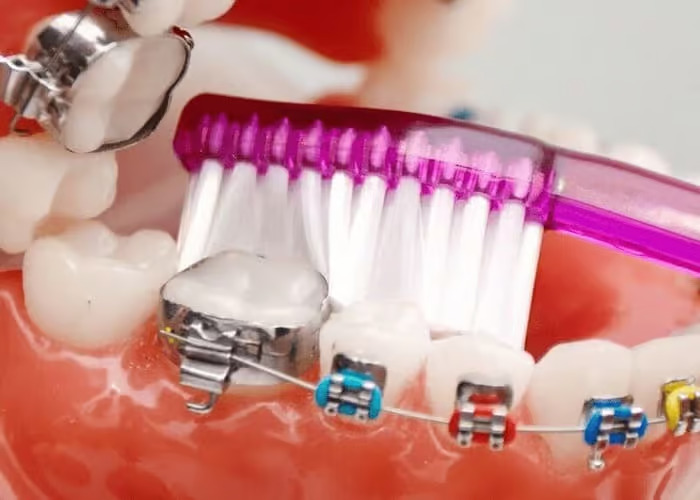Why Can Braces Hurt?

Contents:
Discomfort after fitting braces is a natural phenomenon that disappears after a while. Bite correction, just like dentures, involves the insertion of a foreign object into the oral cavity, so the body needs to adapt. It is essential to monitor diet and hygiene to wear braces to cause as little discomfort as possible.
Pain during orthodontic treatment can appear for several reasons
- Metal archwire pressure and moving teeth. The purpose of braces is to put the teeth in the correct position. This can cause discomfort at the beginning of treatment. In about five to seven days, your teeth will adapt to the constant pressure of the arch, and discomfort will no longer bother you.
- Irritation of the cheek or lip mucous membranes. This happens due to the sharp edges of braces or damaged elements. An orthodontic specialist will help to solve the problem.
- Lock displacement. If the bracket has moved from its original position, it can be traumatized by contact with the soft tissues of the oral cavity. You will require urgent adjustment of the appliance in the dental office.
- Braces tightening. Pain may increase after a follow-up visit to the orthodontist. However, discomfort during the adjustment period is short-term.
- Allergy to the brace materials. You can try to relieve pain due to hypersensitivity using medications. If this does not work, you must change braces to a device made of other materials (e.g., ceramic), although manufacturers usually make products from hypoallergenic materials.

Good Personal Hygiene and Care of Braces
Taking good care of your teeth and orthodontic appliances during treatment is essential. You must properly clean them and monitor the enamel to prevent tooth decay.
Sapphire braces require special attention. They are made of transparent artificial crystals and are practically invisible on the teeth. This property determines the nuances of use and hygiene procedures:
- After fitting sapphire braces, dental specialists recommend refraining from smoking and drinking beverages with food coloring and strong black tea, red wine, and coffee. Otherwise, the transparent plates will turn yellowish or another shade.
- It is necessary to protect braces from excessive mechanical stress. Do not eat stiff and rigid foods. Wear a protective silicone mouthguard during sports training.
- Transparent braces require careful hygiene. After brushing your teeth and the elements of the appliance, perform a check-up: even the smallest particle of food will stand out well against the glassy element and ruin your smile.
Dental specialists at KES Clinic can fit different types of braces. Our orthodontist will explain which type will best suit you at your appointment and how to care for it properly.

Oral Hygiene with Braces
After fitting the braces, the following steps are essential:
- Regular teeth brushing. It is performed after every meal and before going to bed. Pay special attention to the areas around the braces: eradicating food and plaque is necessary.
- Dietary correction. Avoid foods that can get stuck in the elements of the orthodontic appliance. This will reduce the likelihood of gum irritation and tooth decay.
- Visit your checkup regularly. Go for preventive checkups and professional hygiene sessions. This will allow the doctor to detect problems early and offer appropriate solutions.
- Use additional care products. The specialist can recommend products or devices to increase the effectiveness of brushing teeth with braces: irrigators, brushes, and flosses.
Products to Avoid When Wearing Braces Hurt
If you experience unpleasant sensations after beginning orthodontic treatment, it is worth avoiding or limiting certain products. These foods can put additional pressure on the teeth or irritate the gums.
Prohibited:
- Hard foods:
- nuts and seeds;
- carrots (must be diced);
- apples (must be diced);
- radishes (must be diced);
- corn cobs;
- breadcrumbs, bread, crackers;
- hard biscuits;
- snacks;
- nuts-and-honey bars, candied roasted nuts, lollipops;
- raw smoked meat products
- Sticky, dense foods. These tend to get stuck between the teeth and the elements of the orthodontic appliance, increasing discomfort when wearing braces. If they contain a lot of sugar, they can also provoke the development of tooth decay processes.
- Citrus fruits. Acid in lemons, oranges, etc., can cause irritation and pain with teeth hypersensitivity.

During treatment with a brace system, you should favor soft foods. You can eat:
- soft cheese;
- yogurt;
- mashed potatoes;
- vegetable stew;
- boneless soft meat (chicken, turkey, minced meat products);
- soups;
- boiled rice, bulgur;
- soft seafood (boneless fish, crab sticks);
- boiled beans;
- eggs;
- pancakes;
- puddings;
- soft baked goods (muffins, biscuits);
- bananas;
- smoothies, jellies, etc.
The Right Way to Use Braces Care Products
Proper braces care is essential for teeth health and effective treatment. Improper or insufficient use of special hygiene products can lead to problems. Therefore, it is necessary to follow the recommendations of the orthodontist who placed the appliance.
Essential Tips for Cleaning Teeth and Braces
To care for your teeth and braces, you will need:
- Toothbrush. A regular or orthodontic toothbrush. The brush can be manual, electric, or ultrasonic. The advantage of special toothbrushes for patients with a bite correction appliance is the mobility of the head area, which is easy to control when treating the space around the braces.
- Toothbrush. It helps clean the space under the wire between the locks.
- Irrigator. It is used to remove food debris, massage the gums, and hygiene the gingival area of the teeth.
- Floss (special floss). It is necessary for cleaning the interdental spaces.

The hygiene procedure takes several steps:
- using an irrigator;
- brushing the teeth with a toothbrush;
- using a toothbrush;
- flossing – cleaning of the interdental spaces.
No special toothpaste is required for teeth with braces. For those who are uncomfortable flossing, we recommend purchasing a modern Air-Floss device.
This device has been specially designed to care for interdental spaces. Similar to a classic oral irrigator, it uses a mixture of air and water. The jet is delivered under pressure.
The device’s effectiveness is comparable to flossing but requires minimal effort. It takes 30-60 seconds to treat the entire mouth.
What Is the Proper Use of Braces and Retainer Care Products?
In addition to braces, orthodontic treatment involves wearing a retainer. This is a device designed to support the new position of the teeth. Typically, retainers are metal wires glued to the tooth row on the tongue side. Retainers are cared for in the same way as braces. The main thing is to use the right products for this purpose:
- Irrigator. Place the tip of the device near the gum. Clean the neck areas with a jet of water under pressure. Treat the teeth on the outer and inner sides.
- Toothbrush. The main task is to remove soft plaque. Brushing movements can be different: vertical, horizontal, circular. It is essential to go over all surfaces – external, internal, chewing. Treating each part of the tooth requires at least ten movements.
- Interdental brush. Moving the device up and down, go through all the spaces under the bracket wire.
- Dental Floss. Wind the floss on the fingers and clean all interdental spaces. The arch does not interfere with this manipulation; on the contrary – it prevents the floss from penetrating deep under the gum.
- Air-Floss is a portable device for cleaning interdental spaces. The reservoir can be filled with water or mouthwash. To use it, place the tip between your teeth, press the power button, and select the speed (if available). The device will then deliver a pressurized liquid saturated with air bubbles, cleaning the interdental spaces of plaque, bacteria, and food debris.

Anti-inflammatory Liquids: a Way to Reduce Pain When Wearing Braces
If you experience much discomfort during the first days of treatment, you can use painkillers on the doctor’s recommendation. But you should not overuse the medication so as not to harm your health.
Anti-inflammatory liquids have an excellent effect on moderate pain. Special rinses are developed for patients with orthodontic appliances, which help to relieve inflammation and reduce discomfort.
You can buy a ready-made solution or concentrate diluted in water before use. The proportions are usually indicated on the package.
Different ways to use anti-inflammatory fluids to alleviate discomfort exist:
- Compresses. Soak a soft cloth in an antiseptic solution and apply it to the place where the pain is felt for ten to fifteen minutes.
- Gargling. Swish the anti-inflammatory liquid around in your mouth for 30–60 seconds. Concentrate on the area with the braces.
See your dentist or orthodontist for counseling and additional treatment if the pain persists.

